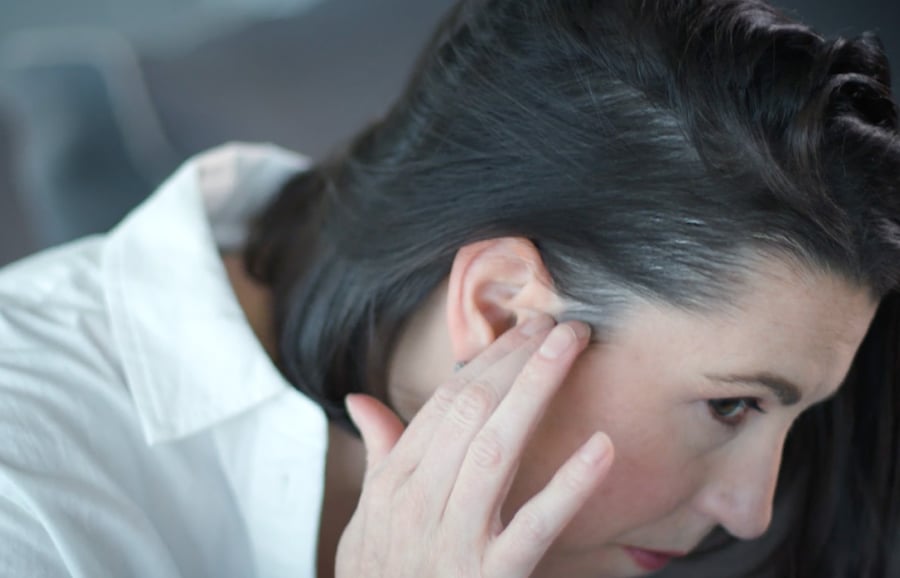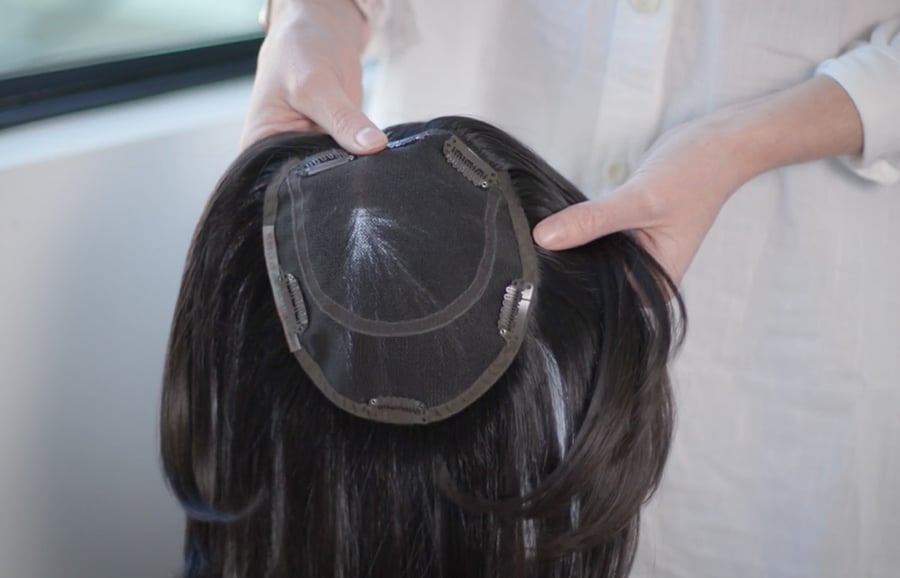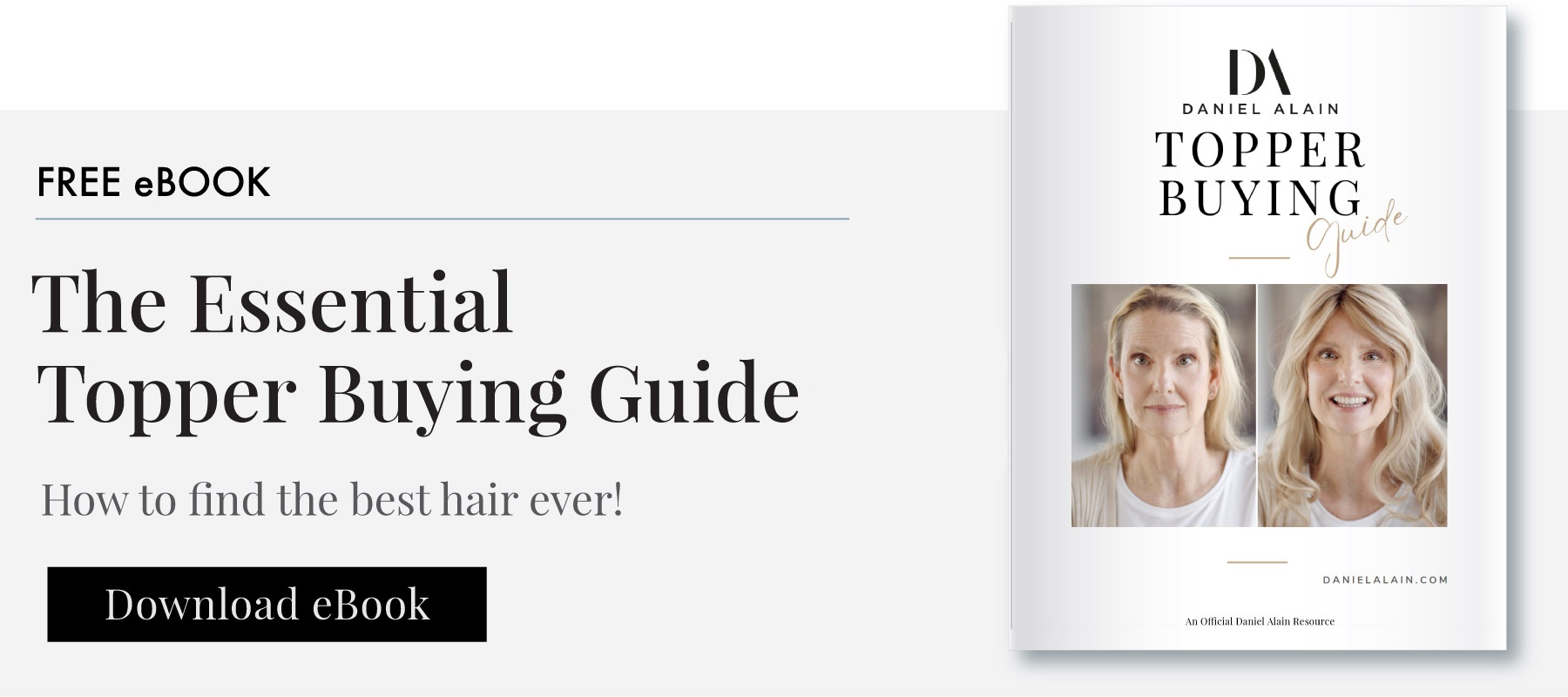Postpartum Hair Loss - Questions and Answers

Dealing with hair loss at a time when you’re already navigating the complexities of motherhood can be particularly challenging. As you adjust to a new identity (mommy!) and a changing body, the added experience of hair loss can sometimes make you feel like a stranger in your own skin.
But don’t worry - this article will provide you with clear, comprehensive answers to commonly asked questions about postpartum hair loss. Plus, we’ll explore effective solutions, including the use of high-quality human hair toppers, to help you regain your confidence.
As leaders in the alternative hair industry, Daniel Alain works with customers experiencing hair loss every day. We understand the emotional and physical impact that hair loss can have, especially during significant life changes like postpartum recovery. Our commitment is to provide exceptional products and compassionate support to help you navigate this challenging period with confidence.
What is Postpartum Hair Loss?

Postpartum hair loss is natural and part of the body’s adjustment process after the hormonal changes of pregnancy. During pregnancy, increased levels of estrogen keep more hair than usual in the resting phase, which leads to thicker, fuller hair. After childbirth hormone levels normalize, and a large number of these hairs shift into the shedding phase. This results in significant hair loss that typically peaks around three to six months postpartum.
This condition is usually temporary, with hair growth returning to normal within a year.
How Can I Minimize Postpartum Hair Loss?

While it’s important to note that postpartum hair loss is a natural and temporary condition that can’t be completely prevented or treated, here’s what you can to do keep your hair looking and feeling healthy during this time:
Nutritional Support
Eating a well-balanced diet is great for your overall health and can also keep your hair looking shiny and healthy. Focus on incorporating lean meats, leafy greens, berries, nuts, and fatty fish into your diet.
Hair Care Tips
While you can’t stop your hair from shedding during the postpartum phase, you can take steps to prevent additional breakage and damage. Use a gentle, detangling brush to brush your hair, avoid tight hairstyles, and minimize the use of heat styling tools. Opt for a moisturizing conditioner to keep your hair silky, manageable, and less prone to tangling.
Stress Management
As a new mother, it’s perfectly okay to focus on your well-being during the postpartum phase. Simple activities like deep breathing, gentle yoga, and spending time outdoors can help you unwind. Ensure you get adequate rest and seek support from friends or family, or a professional can also help you manage the new stresses that come with motherhood.
When Should I See a Doctor About My Hair Loss?
While it’s common to experience some hair shedding after having a baby, certain signs might suggest it’s time to consult a doctor. Normally, postpartum hair shedding is noticeable but shouldn’t be severe enough to cause bald patches or extreme thinning. If you find yourself losing large clumps of hair or developing bald spots, or if your hair doesn’t start to recover within a year of childbirth, it’s a good idea to seek medical advice.
The Advantages of Hair Toppers for Managing Hair Loss

If you’re navigating postpartum hair loss, you might be looking for ways to feel more like yourself while you adjust to your new role as a mother. A hair topper may be an excellent way of enhancing your appearance and boosting your confidence.
Toppers are designed to blend seamlessly with your natural hair and add volume and density where you need it. One of the great advantages of toppers is that they come in various base sizes, making it easy to find a match that suits the severity of your hair loss.
For people experiencing minimal hair loss and requiring just a small boost in density, a small topper, like our Petite or Petite Grande, might be enough to add volume to your crown or specific areas that are thinning. For more extensive hair loss, larger base sizes can cover more significant portions of the scalp. For example, our Trend topper is 5” x 6” and can provide a more comprehensive solution to hair thinning.
Toppers attach to your natural hair using small, discreet clips. These clips are typically snap-style, are easy to fasten, and securely hold the topper in place without causing damage to your natural hair. This is in contrast to hair extensions, which, by pulling continuously at the roots, can exacerbate hair thinning and even lead to traction alopecia over time - a condition caused by sustained tension on hair follicles.
If your hair loss is more extensive, a full wig might provide the coverage and confidence boost you need.
How Do I Choose the Right Hair Restoration Option for Me?
New motherhood can be a challenging time as you adjust to your new role and cope with physical changes, including those affecting your hair. While postpartum hair loss is a temporary phase, it can significantly impact your self-esteem at a time when you may already be feeling vulnerable.
In this article, we’ve answered common questions about managing and minimizing the impact of postpartum hair loss, and have focussed on the benefits and practicalities of using a human hair topper to add volume and density to thinning hair.
Now that you’re equipped with knowledge about postpartum hair loss and the benefits of toppers, the next step is to consider your specific needs and choose the right option for you. You might want to schedule a consultation with a specialist who can provide personalized advice and help you select a product that fits comfortably and looks natural.
Seeking solutions that make you feel more confident is a healthy step towards embracing motherhood fully. You deserve to enjoy this special time with your new baby without feeling held back by postpartum changes.

.jpeg)
